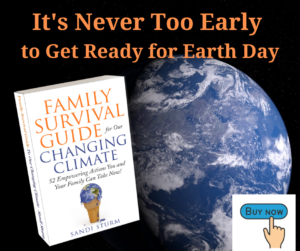Climate and weather are two distinct elements of the environment, and it is essential to understand the differences between them. Both can be deadly if not respected.
Weather is a particular area’s day-to-day temperature, precipitation, wind, and humidity conditions. It is variable and unpredictable and can change from moment to moment, day to day, and season to season.
On the other hand, the climate is the long-term weather patterns in a particular area. Over decades, the average temperature, precipitation, wind, and humidity have determined it.
Weather is much more short-term and localized than climate and described as the “condition of the atmosphere over a short time.” In contrast, the climate is much broader and more all-encompassing. Climate is the average weather over long periods and is used to describe an area’s overall weather patterns.
Weather can have a short-term effect on climate, but the climate is mainly unaffected by short-term weather patterns. While the weather can bring a snowstorm or heat wave, the climate determines whether an area will have wet or dry climates, mild or cold temperatures, or regular occurrences of extreme weather events.
Climate is also responsible for the long-term effects of weather, such as global warming or El Niño.
In summary, the weather is a specific area’s momentary and ever-changing atmosphere conditions. At the same time, the climate is the long-term patterns of weather in that same area. Weather can affect climate over time, but the climate is mainly unaffected by short-term weather conditions.
How Can a Change in Climate Affect a Region?
Climate change can have a significant impact on a region. The temperatures, precipitation levels, and other weather patterns can shift drastically when the climate changes. These changes can affect the environment, from short-term changes in the local ecology to long-term changes in the global climate.
In the short term, a climate shift can alter a region’s environment. Warmer temperatures can cause animals to migrate to different areas and can change the types of plants and animals that inhabit a region. Drier climates can cause water shortages and cause plants to die off. Changes in precipitation can lead to floods and droughts, which can have devastating effects on local ecosystems.
In the long term, a shift in climate can have a global impact. For example, a temperature change can lead to ice caps melting, which can cause sea levels to rise and devastatingly affect coastal regions. Likewise, a change in precipitation can create shifts in desertification and deforestation, resulting in long-term effects on the environment.
A shift in climate can also affect humans. For example, warmer temperatures can cause heat-related illnesses, and changes in precipitation can lead to water shortages and crop failure. Climate changes can also lead to increased extreme weather events, such as hurricanes and floods, which can cause destruction and loss of life.
In conclusion, climate change can have a wide range of effects in the short and long term. Living species in affected areas can feel these effects on the environment and humans, which can have devastating consequences. Therefore, it is important to understand climate change’s effects and take steps to mitigate them.
How Can a Change in Climate Affect the Desert Regions of The United States?
Climate change can significantly affect the desert regions of the United States. Warmer temperatures can increase evaporation and reduce the area’s available water, leading to water shortages and reduced vegetation. In addition, changes in precipitation levels can lead to a decrease in the frequency of rainstorms, which can cause the desert to become even drier and more barren.
Higher temperatures can also increase dust storms, which can cause air pollution and create health problems for those in the region. In addition, changes in climate can lead increases of extreme weather events, such as flash floods and droughts, which can cause destruction and loss of life.
Finally, a change in climate can lead to a decrease in the number of animal species in the desert. Warmer temperatures can cause animals to migrate to different regions. Changes in precipitation can reduce the amount of available food and water and decrease the number of animal species in the area.
In conclusion, climate change can drastically affect the desert regions of the United States and all that inhabit the area. Therefore, it is crucial to understand climate change’s effects and take steps to mitigate them.
Ways to Reduce Your Contributions to the Changing Climate
Over the years, people have heard all the devastating stories and asked me what they can do about it as an individual. They wonder if the actions of one person or family can truly make a difference. The answer is yes! In response, I wrote the book “Family Survival Guide to Our Changing Climate: 52 empowering actions you can take now to reduce your carbon footprint.” This book on Amazon gives you practical information explaining how to make simple changes and the facts to back it up.
Learn ways to reduce your carbon footprint today!





